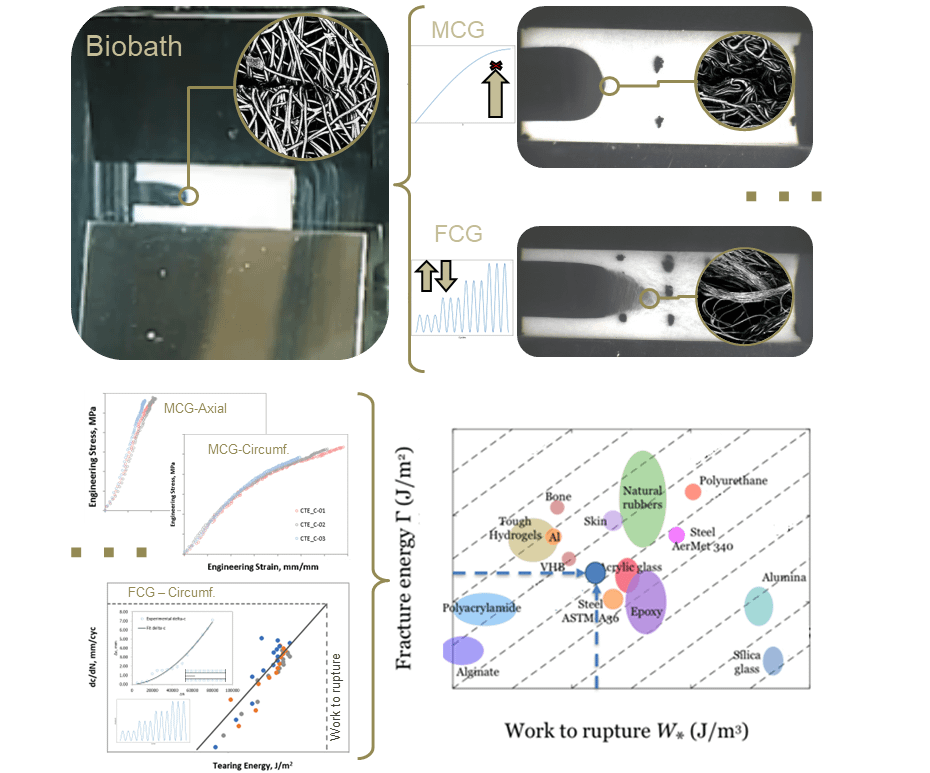New Approaches in Scaffold Material Analysis: Understanding Fatigue Behavior
Microscopic analysis conducted as part of the investigation revealed notable changes in fibril appearance and a reduction in diameter due to permanent deformation, providing evidence of fatigue. Additionally, distinct anisotropic behavior in crack propagation was observed, with a consistent preference for axial direction, emphasizing the influence of microstructure on fatigue performance.
The characterization approach utilized in this study simplified material behavior into essential parameters such as work of fracture, tearing energy, and flaw sensitivity. These parameters offer valuable insights into fracture resistance, crack growth behavior, and flaw sensitivity, facilitating comparisons across different conditions.
The implications of these findings are significant, providing researchers and engineers with crucial parameters for informed decision-making and enabling comparisons with other materials or different scaffold versions. Furthermore, the data generated can fuel predictive models, facilitating deeper exploration of scaffold performance during biomaterial degradation and tissue generation.
This study, led by researchers at Leartiker, represents a significant advancement in scaffold material characterization, offering valuable insights into material behavior and paving the way for enhanced design and application in various biomedical settings.

